Hidden and Unfamiliar
Taryn Simon documents secret places in America that have rarely been seen by the public eye: the bureau of engraving and printing, a cryogenics facility, a hymenoplasty, a site for testing fireworks.

Interview by Rosecrans Baldwin
Taryn Simon is best known for “The Innocents,” a series documenting cases of wrongful conviction in the United States. In her new show and book, “An American Index” (recently on display at The Photographers’ Gallery, London), she goes about documenting secret places in America that have rarely been seen by the public eye: the bureau of engraving and printing, a cryogenics facility, a hymenoplasty, a site for testing fireworks. As Simon notes below, “the process is indebted to both imagination and the internet, followed by an incessant amount of letter writing and phone calling.” Continue reading ↓
All images appear courtesy the artist and the Gagosian Gallery, New York. All images © Taryn Simon, all rights reserved.
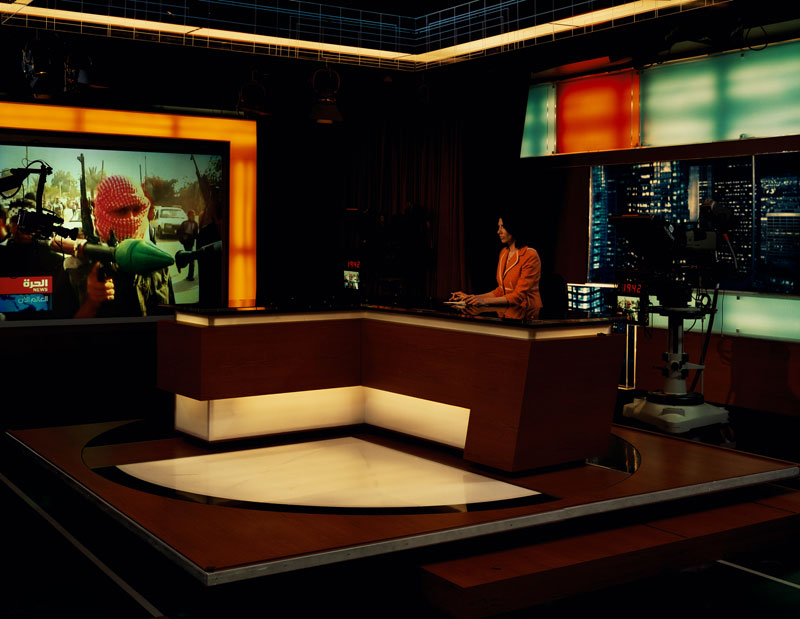
Alhurra TV, Broadcast Studio
Springfield, Va.
Anchor Mona Atari at the Alhurra news desk. Alhurra is a U.S. government-sponsored, Arabic-language television network devoted primarily to news and information. Established in Feb. 2004, the network broadcasts 24-hour, commercial-free satellite programming to an audience of 21 million weekly viewers in 22 Arab countries. In April 2004, a second, Iraq-focused channel, Alhurra Iraq, was launched. Section 501 of the U.S. Information and Education Exchange Act, passed by Congress in 1948, authorizes the U.S. government to disseminate information abroad about the U.S. and its policies. Section 501 also prohibits domestic dissemination of that same information. It is therefore illegal to broadcast Alhurra domestically. Alhurra is Arabic for “the free one.”
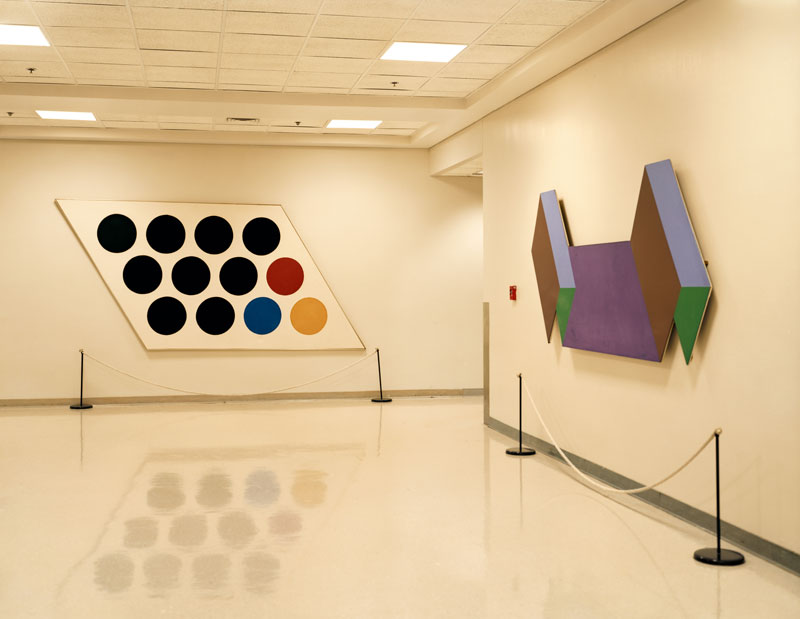
The Central Intelligence Agency, Art
CIA Original Headquarters Building, Langley, Va.
The Fine Arts Commission of the CIA is responsible for acquiring art to display in the Agency’s buildings. Among the commission’s curated art are two pieces (pictured) by Thomas Downing, on long-term loan from the Vincent Melzac collection. Downing was a member of the Washington Color School, a group of post World War II painters whose influence helped to establish the city as a center for arts and culture. Vincent Melzac was a private collector of abstract art and the Administrative Director of the Corcoran Gallery of Art, Washington, D.C.’s, premiere art museum. Since the founding of the CIA in 1947, the Agency has participated in both covert and public cultural diplomacy efforts throughout the world. It is speculated that some of the CIA’s involvement in the arts was designed to counter Soviet Communism by helping to popularize what it considered pro-American thought and aesthetic sensibilities. Such involvement has raised historical questions about certain art forms or styles that may have elicited the interest of the Agency, including abstract expressionism.
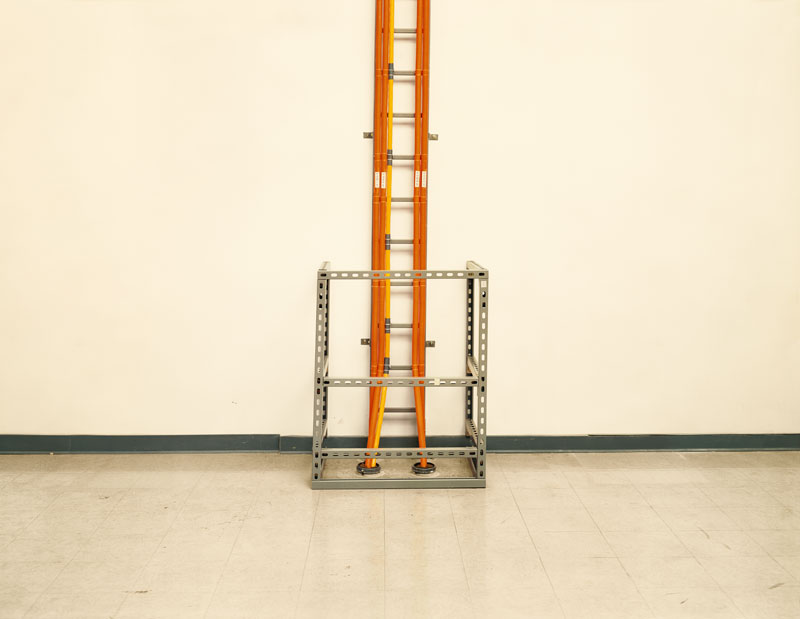
Transatlantic Submarine Cables Reaching Land
VSNL International, Avon, N.J.
These VSNL submarine telecommunications cables extend 8,037.4 miles across the Atlantic Ocean. Capable of transmitting over 60 million simultaneous voice conversations, these underwater fiber-optic cables stretch from Saunton Sands in the United Kingdom to the coast of New Jersey. The cables run below ground and emerge directly into the VSNL International headquarters, where signals are amplified and split into distinctive wavelengths enabling transatlantic phone calls and internet transmissions. Underwater fiber-optic cables are laid along the ocean’s floor by specially designed ships. Cables are buried as they approach shore and armored to protect against undersea landslides, marine life (sharks, in particular), and fishing equipment. Fishermen are advised of cable locations as hooking one can interfere with international communication services as well as sink a boat. VSNL operates one of 14 submarine cable systems connected to the continental United States. Exchanges originating in the U.S. are combined and enhanced before broadcast and transmission across the Atlantic. As of 2005, submarine cables link all the world’s continents except Antarctica.
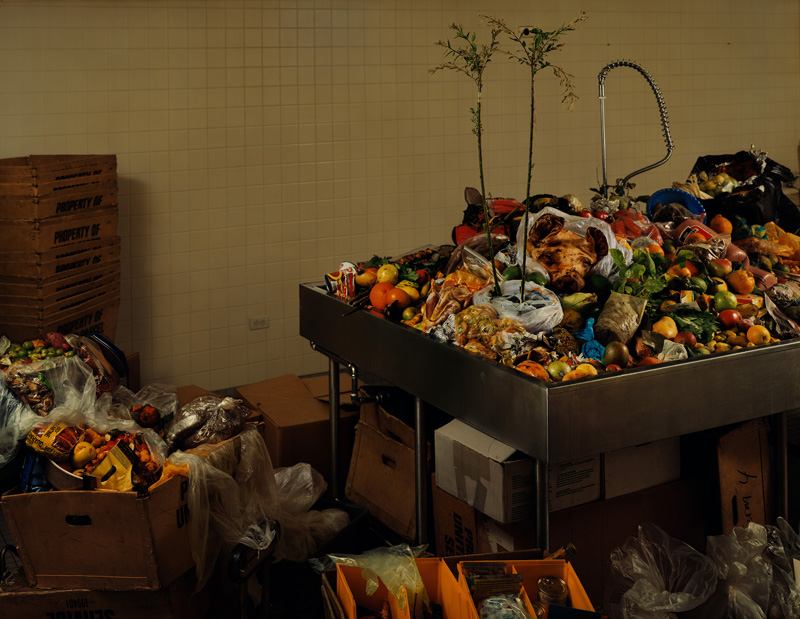
U.S. Customs and Border Protection, Contraband Room
John F. Kennedy International Airport, Queens, N.Y.
African cane rats infested with maggots, African yams (dioscorea), Andean potatoes, Bangladeshi cucurbit plants, bush meat, cherimoya fruit, curry leaves (murraya), dried orange peels, fresh eggs, giant African snail, impala skull cap, jackfruit seeds, June plum, kola nuts, mango, okra, passion fruit, pig nose, pig mouths, pork, raw poultry (chicken), South American pig head, South American tree tomatoes, South Asian lime infected with citrus canker, sugar cane (poaceae), uncooked meats, unidentified sub-tropical plant in soil. All items in the photograph were seized from the baggage of passengers arriving in the U.S. at JFK Terminal 4 from abroad over a 48-hour period. All seized items are identified, dissected, and then either ground up or incinerated. JFK processes more international passengers than any other airport in the United States.
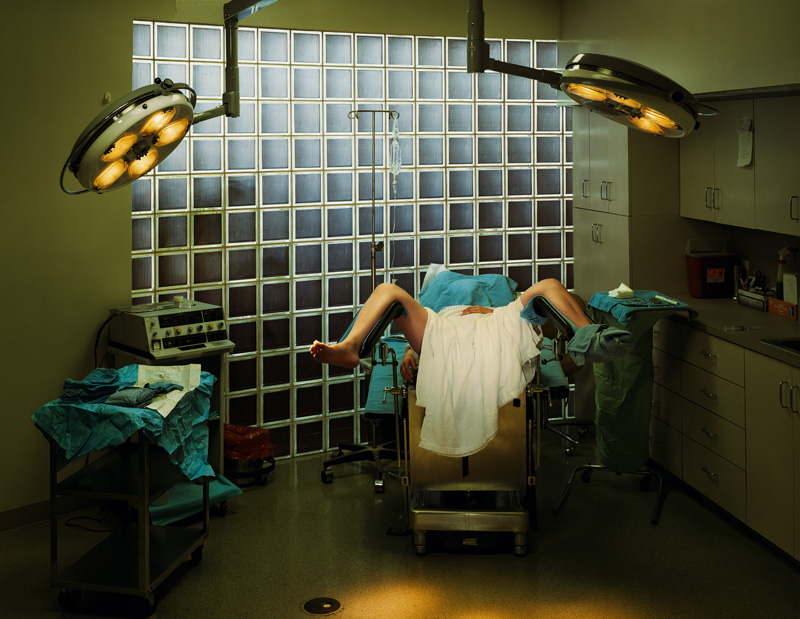
Hymenoplasty, Cosmetic Surgery, P.A.
Fort Lauderdale, Fla.
The patient in this photograph is 21 years old. She is of Palestinian descent and living in the United States. In order to adhere to cultural and familial expectations regarding her virginity and marriage, she underwent hymenoplasty. Without it she feared she would be rejected by her future husband and bring shame upon her family. She flew in secret to Florida where the operation was performed by Dr. Bernard Stern, a plastic surgeon she located on the internet. The purpose of hymenoplasty is to reconstruct a ruptured hymen, the membrane which partially covers the opening of the vagina. It is an outpatient procedure which takes approximately 30 minutes and can be done under local or intravenous anesthesia. Dr. Stern charges $3,500 for hymenoplasty. He also performs labiaplasty and vaginal rejuvenation.
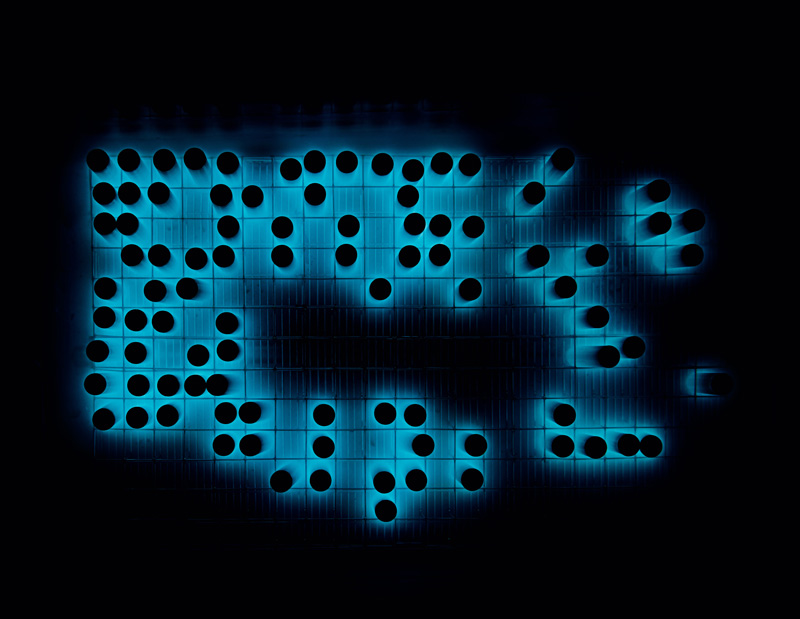
Nuclear Waste Encapsulation and Storage Facility, Cherenkov Radiation
Hanford Site, U.S. Department of Energy, Southeastern Washington State
Submerged in a pool of water at Hanford Site are 1,936 stainless-steel nuclear-waste capsules containing cesium and strontium. Combined, they contain over 120 million curies of radioactivity. It is estimated to be the most curies under one roof in the United States. The blue glow is created by the Cherenkov Effect. which describes the electromagnetic radiation emitted when a charged particle, giving off energy, moves faster than light through a transparent medium. The temperatures of the capsules are as high as 330 degrees Fahrenheit. The pool of water serves as a shield against radiation; a human standing one foot from an unshielded capsule would receive a lethal dose of radiation in less than 10 seconds. Hanford is among the most contaminated sites in the United States.
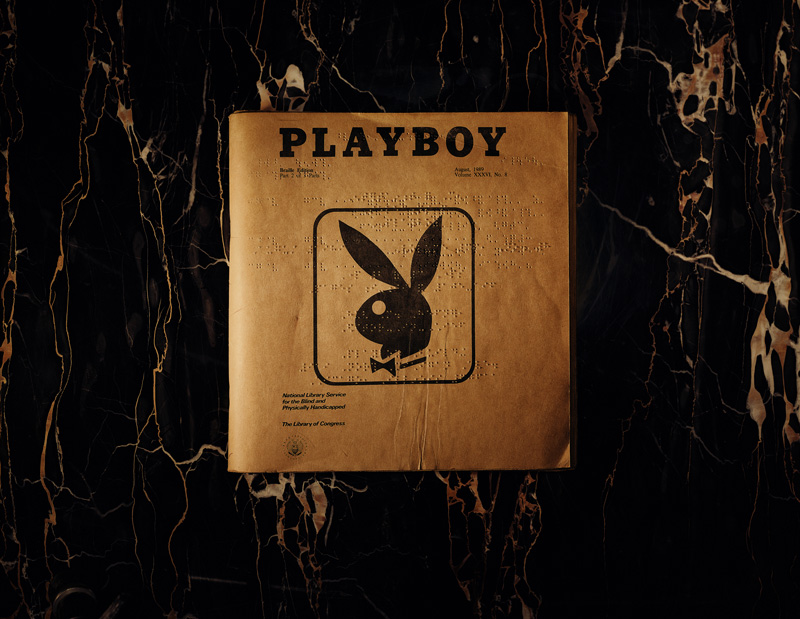
Playboy, Braille Edition
Playboy Enterprises, Inc., New York, N.Y.
The National Library Service for the Blind and Physically Handicapped (NLS), a division of the U.S. Library of Congress, provides a free national library program of Braille and recorded materials for blind and physically handicapped persons. Magazines included in the NLS’s programs are selected on the basis of demonstrated reader interest. This includes the publishing and distribution of a Braille edition of Playboy. Approximately 10 million American adults read Playboy every month, with three million obtaining it through paid circulation. It has included articles by writers such as Norman Mailer, Vladimir Nabokov, Philip Roth, Joyce Carol Oates, and Kurt Vonnegut and conducted interviews with Salvador Dali, Jean-Paul Sartre, and Malcolm X.
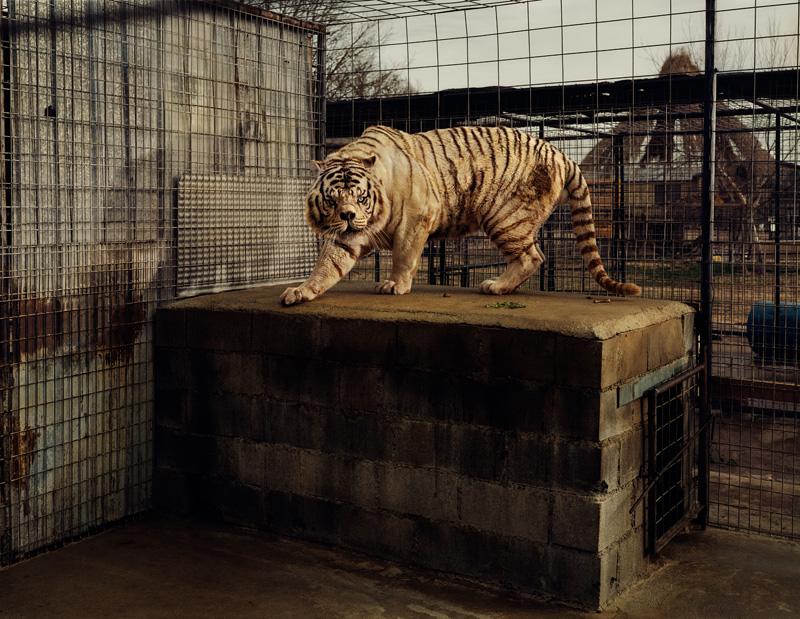
White Tiger (Kenny), Selective Inbreeding
Turpentine Creek Wildlife Refuge and Foundation, Eureka Springs, Ark.
In the United States, all living white tigers are the result of selective inbreeding to artificially create the genetic conditions that lead to white fur, ice-blue eyes, and a pink nose. Kenny was born to a breeder in Bentonville, Ark., on Feb. 3, 1999. As a result of inbreeding, Kenny is mentally retarded and has significant physical limitations. Due to his deep-set nose, he has difficulty breathing and closing his jaw, his teeth are severely malformed and he limps from abnormal bone structure in his forearms. The three other tigers in Kenny’s litter are not considered to be quality white tigers as they are yellow-coated, cross-eyed, and knock-kneed.
Interview continued
Where did this project begin? Where’s the appeal for things that are off-limits?
Its genesis was a photograph I took five years ago at The Palace of the Revolution in Cuba. It was something that I responded to aesthetically; it was more abstract and ambiguous than past work I have produced. It floated in a disorienting space until it crashed to earth through its caption. Its success was bound to its content. It was a space that is inaccessible to the public and largely un-photographed. After September 11th, when the American government and media was so deeply invested in finding secret sites (the inaccessible) beyond its borders, I decided to look inward—to find the hidden and unfamiliar, the out-of-view and off-the-radar within American borders.
Bringing the walled-off to public view has a sense of Robin Hood. What was going through your mind when you were going behind the closed doors in all these different sites?
Like most reveals—I was confronted with vulnerabilities. To see the innards is often disillusioning. You see the mold, the cracks, the true size and form. So much was caught in time; felt un-evolved. But I had only reached another perch.
In “The Innocents,” you showed us convicts who were wrongly convicted. With these secret places, you’re bringing us what we’re supposed to be forbidden to see. Do you have a sense when you’re shooting that you’re working on behalf of one side or the other, the subject or the audience?
I’m working for myself and responding to certain anxieties that I need to confront, particularly in “An American Index.” I’m very aware, in the end result, of both the subject and the audience, and more importantly photography’s engagement with both. My focus on text and controlling the context in each image and the series as a whole is in direct response to this.
How did you go about tracking down access to your locations?
The process is indebted to both imagination and the internet, followed by an incessant amount of letter writing and phone calling.
Was there somewhere you wanted to shoot for this series that you couldn’t get access to?
There were several sites, most notably Disney. I had requested access to their underground facility where characters reveal their true identities, where cars, garbage and the ugly, pragmatic, necessary breaks in the fantasy exist. Their response was far better than any photograph I could have ever taken.
It read:
After giving your request serious consideration, even though it is against company policy to consider such a request, it is with regret that I inform you that we are not willing to grant the permission you seek…As you are aware, our Disney characters, parks and other valuable properties have become beloved by young and old alike, and with this comes a tremendous responsibility to protect their use and the protection we currently enjoy. Should we lapse in our vigilance, we run the risk of losing this protection and the Disney characters as we know and love them….Especially during these violent times, I personally believe that the magical spell cast on guests who visit our theme parks is particularly important to protect and helps to provide them with an important fantasy they can escape to.
(Excerpted from a faxed response from Disney Publishing Worldwide, July 7, 2005.)
